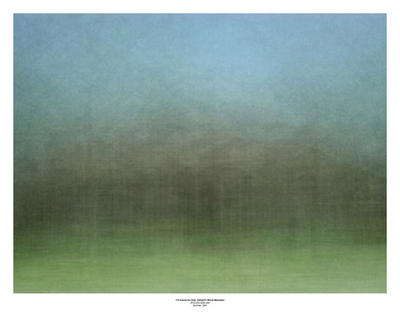As per the architectural averages of Meggan Gould, Jason Salavon, self-styled photographic king of the averaged image, has declared war on the US housing market through a really almost awe-inspiring photographic series called “Homes for Sale.”
By taking the visual average of, for instance, 114 homes for sale in the Dallas/Ft. Worth area –

[Image: 114 Homes for Sale, Dallas/Ft. Worth Metroplex].
– Salavon really just obliterates any claim to individuality – let alone architectural interest – that the (literally) average American home now has.
The housing market, in other words, has broken.

[Image: 124 Homes for Sale, The 5 Boroughs].

[Image: 117 Homes for Sale, Chicagoland].
How do you even know where you are? New York? Chicago?
St. Louis?
What’s so exciting about these images is how sarcastically condemnatory, rigorously critical, and yet strangely beautiful they really are. Of course the promising landscape of “America” is being destroyed by its own architecture; of course that country is falling victim to bad – or utterly absent – planning.
But Salavon’s images make this visually obvious, graphically accessible; they take what every American sees, everyday – driving through the exurbs, living in the midst of the homogeneous – and these images give it an iconography.
They represent the total mediocrity of America’s anarchitectural establishment.
Everyone’s houses look the same.

[Image: 121 Homes for Sale, LA/Orange County].

[Image: 112 Homes for Sale, Miami-Dade County].
Do you live in LA, or do you live in Miami? How the fuck can you even tell?
The symmetry and abstraction is by now so complete that America could fold in on itself through some complicated topological procedure, coast to coast, heartland to homeland, LA to Miami… and it could utterly disappear.

[Image: 109 Homes for Sale, Seattle/Tacoma].
Toward the end of Mark Rothko‘s life, as he drifted closer and closer to an unavoidable suicide, the paintings he produced grew more and more monochrome, lunar, enveloped in black and white, monumental, voidlike, immense.

[Image: Mark Rothko, Untitled, 1969].
As the color and vibrancy and detail and expressive individualism – even the ironic beauty – of the American housing market continues to flatline, it will be interesting to see if, in several years’ time, as the decades turn, as the millennium ages, perhaps Jason Salavon can return to this series and produce more maps of the architectural void, the evening-out, the swan song, the facade of national absence, to see if the architecture of an entire nation has succeeded in committing suicide.

[Image: Mark Rothko, Untitled (No. 4), 1964].
Until then, millions and millions of American homes will continue to be for sale.

(Via, and with thanks to, Abe Burmeister at Abstract Dynamics).
What a great aha moment for the artist and the viewer!
I appreciate your perspective and agree that this series is extremely interesting. But won’t “the architecture of an entire nation [succeed] in committing suicide” when one of Salavon’s averages of hundreds shows a single house, meaning that there is no variation between them at all, and thus no individuality? Because they become Rothko-like now, that must mean that there IS still some variation. Thanks for your thought-provoking essay.
Good point… There would still be variation due to individual photographs and photography styles, but the houses themselves, the details beneath the variations, would start to congeal into an unchanging photographic monolith. The blur, as it were, would come from the photographer. The decisions each photographer made.
I think there's a case to be made that that's what has happened here rather than the other way around. We have a blur to recount the story not because there really is sufficient variation in subject matter but because there's more variation in the photographs and the homogeneity of the subject matter is camouflaged. Whereas the article that links to this, Meggan Gould's similar work shows the subjects persisting through 100 iterations of what amounts to every tourist taking the same damn shot.